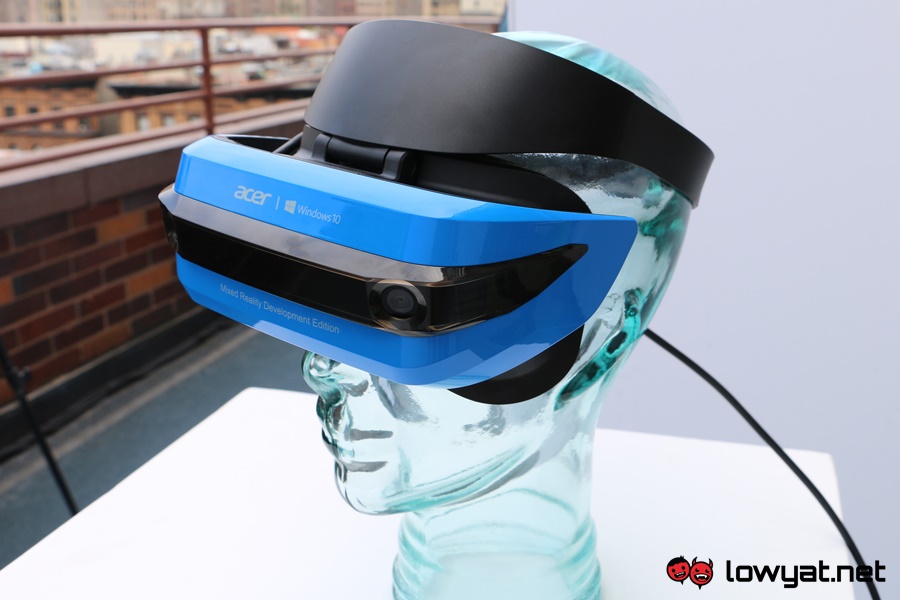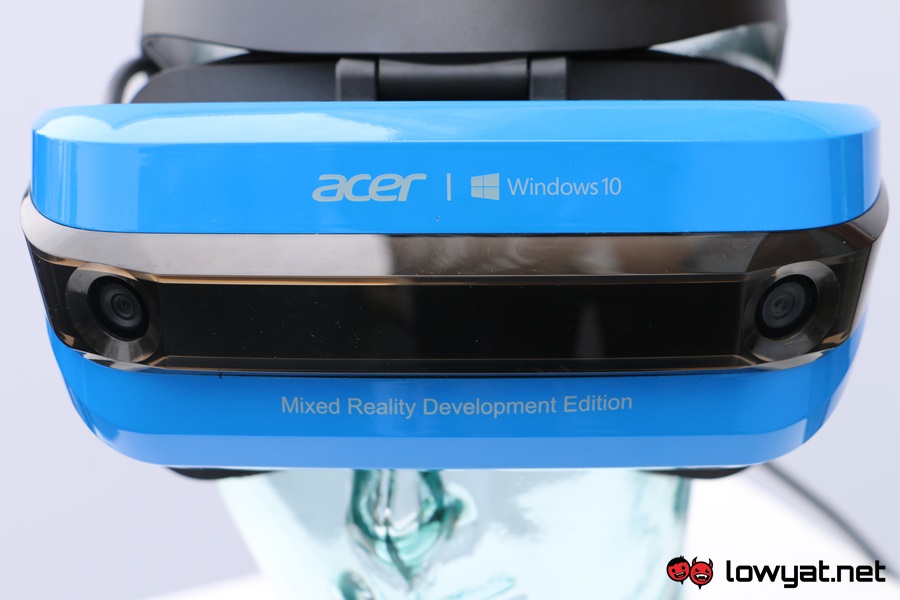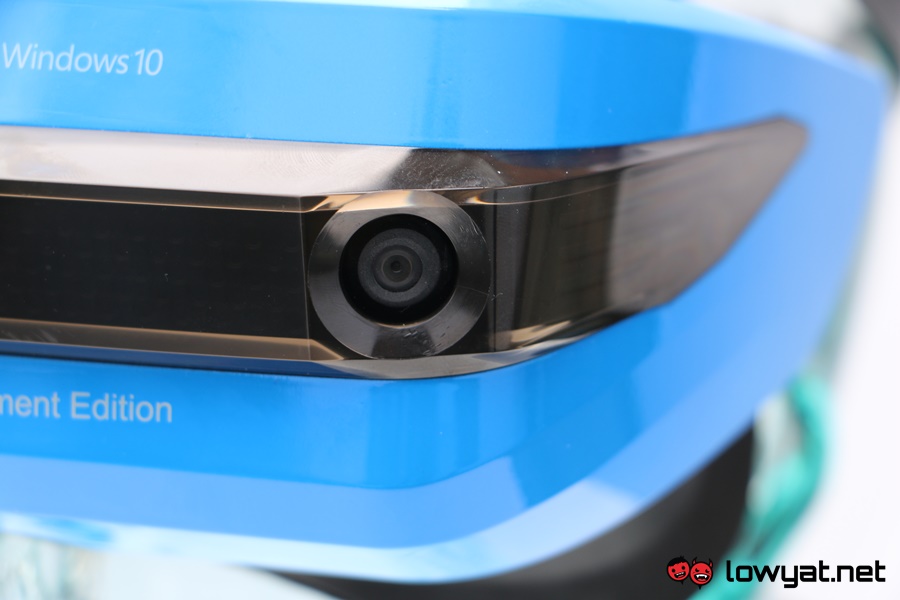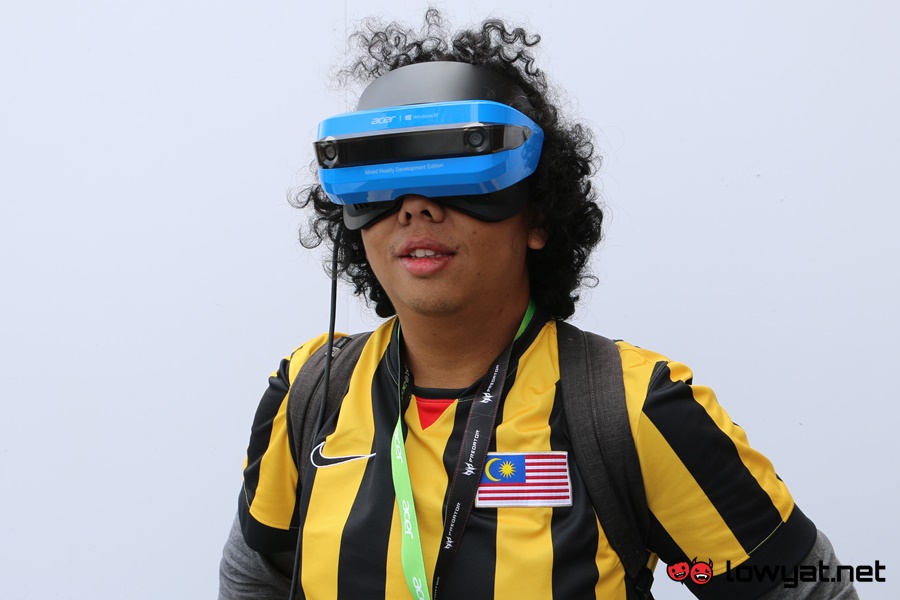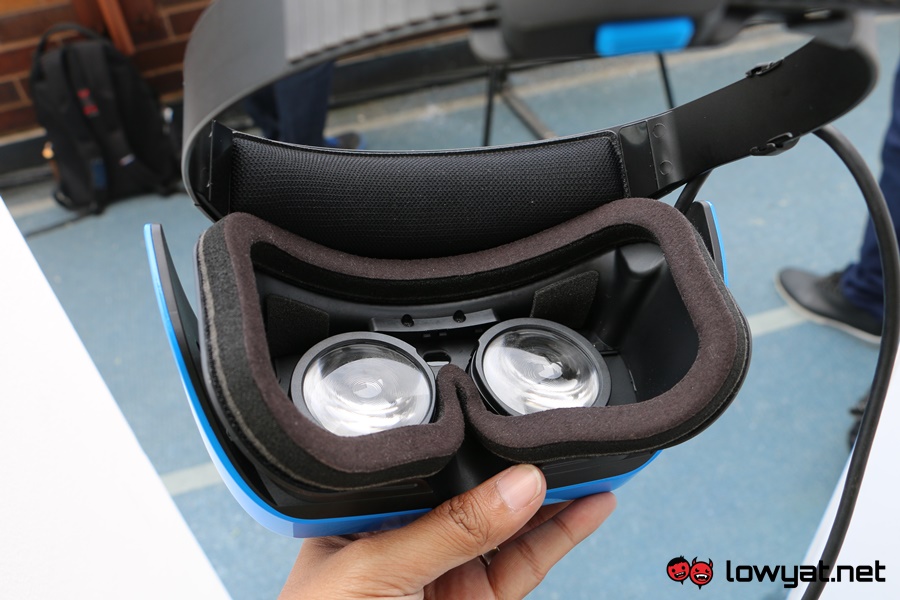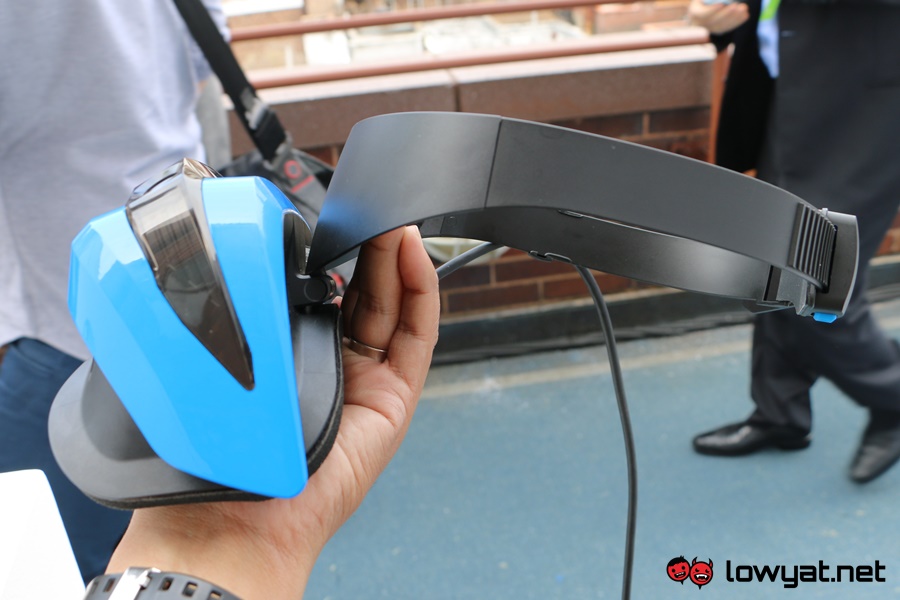In general, this particular product is still a work in progress but given the scale of the recently concluded press event in New York, it is not surprising that Acer decided to showcase its Windows Mixed Reality Head-Mounted Display (HMD) at the event. Even though this variant is meant for developers, it can be deemed as a preview to the finalized version which is scheduled for release to consumers later this year.
Even though the origin of the Windows Mixed Reality (formerly known as Windows Holographic) collaboration between Microsoft and Acer as well as several other OEMs which was announced last October can be traced back to Hololens, there are several characteristics that separated Acer HMD and Hololens apart.
For example, Hololens features see-through glasses but not for Acer HMD which is a fully closed headset. This alone made Acer HMD feels like a virtual reality headset rather than a mixed reality headset like Hololens which allows mixture of real life and digital elements via its passthrough lenses.
Furthermore, Acer HMD is a tethered headset which again made it feel like a VR headset such as HTC Vive and Oculus Rift as opposed to the self-contained system that is Hololens. That being said, Acer’s headset do comes with inside-out tracking sensors which are the same method used by Hololens and enables Acer HMD to be set up without the need of external sensors as per Vive or Rift.
As for the other components within Acer HMD, it also includes an LCD display with 1440 x 1440 resolution per eye and 90Hz refresh rate. Additionally, there are also a 3.5mm audio combo port as well as a 4m combo cable that carries HDMI 2.0 and USB 3.0 connectors.
Meanwhile, the Acer HMD runs on the same Windows Mixed Reality platform as per Hololens which is pretty much the demonstration that Acer has provided to the attendees of its press event in New York. Once a quick calibration is done, I was transported into a house which contained familiar elements and apps from Windows 10.
While Acer HMD is able to track user’s movement which means I can move inside the Windows Mixed Reality environment just by walking around, I was asked to dominantly move using the Xbox controller instead. I suppose this was not only due to the size of the demo area but also since real life objects in the room are not shown in Windows Mixed Reality environment which means I can bump into tables, chairs and other stuff rather easily although warnings will still appear if I get too close to walls or physical objects that Acer HMD able to detect.
In order to showcase the environment’s capability of delivering multi-tasking as per normal Windows 10 experience, I was asked to run several applications including Microsoft Edge browser as well as Mail, Video (which playback standard and 360-degrees video), and Weather apps. My demo session was concluded with a quick run of HoloTour app with Machu Picchu as my designated destination.
As for the overall feeling of headset itself, the HMD feels rather light just like what Acer has claimed. Although it might look rather basic, the padding within the headset’s visor are also quite comfortable even though I’m wearing glasses. Additionally, its 2880 x 1440 90Hz display helps deliver good viewing experience as well.
The thing that I like the most about Acer HMD is that its visor can be flipped up which means users don’t need to fully take off the headset if they need to temporarily be away from the Windows Mixed Reality environment in situations such as to answer phone calls, having a quick drink, and many more. It is something that maybe other headset makers would like to adapt because it is such a convenient feature.
Despite my opinion on how Acer HMD should be classified as a virtual reality headset rather than for mixed reality, it is still an interesting piece of gear. The headset’s price tag is not yet known at the moment but given how Acer HMD seems to be less complex than Hololens, Rift, or Vive, it would be great if Acer able to deliver it at USD 299 (about RM 1,295) as per Microsoft’s announcement last year.
At that price point, Acer might be able to position its Windows Mixed Reality HMD as a good point-of-entry for users that want to obtain VR experience at a much more affordable price and lower hardware requirements than existing high-end VR solutions.
Follow us on Instagram, Facebook, Twitter or Telegram for more updates and breaking news.


